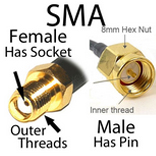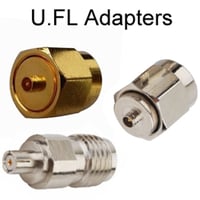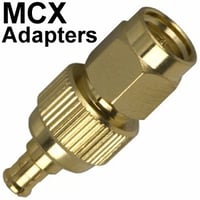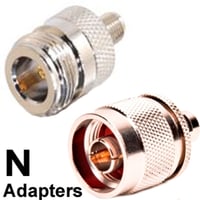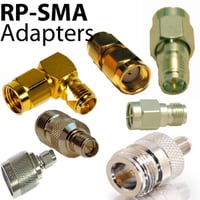SMP Cables
There are no products listed under this category.
The SMP connector
SMP stands for Sub Miniature push-on. The SMP connector is a compact, sub-miniature high-frequency connector that has been developed for its ease of use and stable performance. Despite their small size, they are able to support frequencies of up to 40 GHz competently.
Applications of the SMP connector
The small form factor and microwave frequency performance of the SMP connector makes it an extremely useful connector. Here are some of the key applications of the SMP connector:
- Military-aerospace
- Testing systems
- Blind mate arrays
- PCB stacking
- Coax to circuit launchers
Unlike other, threaded radio frequency connectors, the SMP connector offers easy and intuitive push-pull mating and unmating. SMP connectors are available with three different levels of tool-free detent, the level of engagement and disengagement force the connector requires. The levels are full, limited, and smooth bore. In addition, there are snap-on variants available.
SMP connectors are also available with a floating spring bullet connector that can be used to eliminate RF leakage by compensating for radial and axial misalignment under various states of compression in gang mating of these connectors.
SMP connectors were originally developed in the 1980s by Corning Gilbert and sold as the Gilbert Push-On (GPO). It was a popular RF connector that later became standardized for use in the defense sector by Carlisle Interconnect Technologies.
Physical specifications of the SMP connector
SMP connectors consist of shroud (male, with pin), jack (female, with receptacle), and plug (male) connectors. SMP bullets are jack-to-jack in-series adapters that can mate two cable-attached shrouds. The jacks and plugs are available in a range of configurations including straight, right-angle, and cable connectors. Shroud connectors can also be bulkhead or flange-mounted.
The jack diameter is 0.145 inches (3.70 millimeters) and the shroud diameter is 0.142 in (3.60 millimeters).
SMP connectors conform to Defense Electronics Supply Center (DESC) military specifications and standards:
- MIL-STD-348
- DSCC 94007
- DSCC 94008
They remain compatible with the original GPO connector.
SMP connectors consist of a beryllium copper (CuBe) body with gold or nickel plating. The center contact (pin or receptacle) is made from gold-plated beryllium copper. The dielectric is made from PTFE and the shroud is made from passivated stainless steel, hermetically sealed with glass bead.
SMP connectors are rated for 100 mating cycles for full detent connectors and 1000 cycles for smooth bore connectors. The insulated mating interface can accommodate up to 0.020 inches (0.58 millimeters) of radial or axial misalignment, which is retained by the spring-loaded anti-rocking ring. Mating forces are controlled and range between 15 pounds for the full detent and 0.5 pounds for the smooth bore.
Electrical specifications of SMP connectors
Like other sub-miniature radio frequency connectors, the SMP connector has a characteristic impedance of 50 Ohm and a frequency range spanning DC to 40 GHz. Depending on the format and geometry of the connector, the VSWR ranges from 1.10 to 1.40 with RF leakage of 80 decibels at 3 GHz.
SMP coaxial cable assemblies
The SMP connector can be used with semi-rigid or flexible cables using crimp-on straight or right-angle connectors. Here are the compatible cable types:
[A] 0.047 coax
- Semi-rigid coaxial cable
- Diameter: 0.047 inches (1.19 millimeters)
- PTFE dielectric
- Tinned aluminum shield
- Max frequency: 20 GHz
- Impedance: 50 Ohm
- Velocity of Propagation: 69%
- Attenuation (@ 1 GHz): 190 dB/100ft
[B] 0.086 coax
- Semi-rigid coaxial cable
- Diameter: 0.085 inches (2.18 millimeters)
- PTFE dielectric
- Tinned aluminum shield
- Max frequency: 40 GHz
- Impedance: 50 Ohm
- Velocity of Propagation: 69%
- Attenuation (@ 1 GHz): 23 dB/100ft
[C] RG 178
- Flexible coaxial cable
- Diameter: 0.072 inches (1.83 millimeters)
- PTFE dielectric
- Max frequency: 3 GHz
- Impedance: 50 Ohm
- Velocity of Propagation: 70%
- Attenuation (@ 1 GHz): 44 dB/100ft
[D] RG 316 coax
- Semi-rigid coaxial cable
- Diameter: 0.102 inches (2.59 millimeters)
- PTFE dielectric
- Max frequency: 3 GHz
- Impedance: 50 Ohm
- Velocity of Propagation: 69%
- Attenuation (@ 1 GHz): 38 dB/100ft

